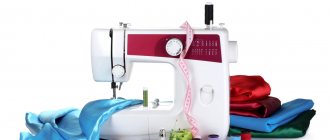Home / Tableware and serving items / Serving items
Back
Published: 08/03/2015
Reading time: 3 min
0
6367
Napkins are an important component of human culture. People began to use them since ancient times. We are so accustomed to these hygiene products that we would rather notice the absence of napkins on the table than their presence. A self-respecting, cultured person must use napkins even at home. Any catering establishment is unthinkable without them.
Modern napkins only vaguely resemble their ancient counterpart made from fig tree leaves, which was actively used in Ancient Egypt exactly three millennia ago. Today, manufacturers offer napkins of different designs, made not only from traditional cellulose.
Cotton, silk, mixed fabrics and microfiber are used
In addition to individual fabric napkins that protect clothes from getting food, a whole range of these products are produced that are used for completely different purposes. For example, for cocktails, hygienic lip care (made of paper), table setting - this is not a complete list of the purposes of napkins.
- Materials and types
- How to choose
- Linenmill Home
How to choose napkins for table setting?
Napkin material
There are paper and linen table napkins. To decide which ones you need, you need to consider, firstly, what kind of event they are being purchased for - a celebration with children, a reception with friends or relatives, work colleagues, or just a dinner at home with your family. It is considered correct to set the table with paper napkins for everyday meals or for buffets. It is customary to serve cloth napkins on holiday tables.
Secondly, the choice of napkin material depends on the interior and decorative elements. If there are more fabric decorative elements, then it is best to choose fabric-based napkins. And if paper elements predominate in quantity, then it is better to choose paper napkins.
Thirdly, we choose napkins depending on the material of the tablecloth. Napkins for serving must be chosen not only by appearance, pattern, but also by the material of the tablecloth. If such textiles are made from linen and silk, then you need to choose napkins from the same materials. But if the fabrics are made of polyester or synthetics, then you can use inexpensive or disposable wipes. But keep in mind that if you purchase fabric napkins with which you intend to wipe your mouth and lips, it is better to choose cotton or linen material, since such napkins absorb better.
Napkin sizes
Many people know that their price depends on the quality and size of napkins. No need to save money and buy small napkins. To make guests feel comfortable, you need to buy larger napkins. These napkins are easier to fold.
Pattern on napkins
For children's parties, it is best to choose brightly colored napkins with your favorite cartoon characters. For events with adults, plain napkins are considered the best option. For themed celebrations, such as New Year or Christmas, you should choose a design with appropriate motifs.
Color
They must match the tablecloth or contrast with it. If there are two tablecloths, then the color of the napkin should match the one below.
DIY serving napkins
Textiles have long been used to decorate home interiors. Even an ordinary white tablecloth can transform a table set for dinner and bring coziness to a family feast. This decorative element performs not only an aesthetic, but also a practical function.
Fabric option
Every housewife should be able to decorate the table in an interesting way for the arrival of guests. We will look at how to easily sew napkins with your own hands and fold them beautifully for table setting. First of all, you should prepare all the necessary materials and tools that may be needed during the work.
To make a fabric napkin for serving table we will need:
- scissors;
- cotton, linen or artificial fabrics;
- pins of different sizes;
- skein of thread for basting;
- sewing machine;
- iron.
Related article: Setting the table with taste: selection of dishes, cutlery and accessories [stylish sets]
The sewing process is as follows:
- The dimensions of the product can be very different, in this case it is a square of 50 by 50 cm. Once you have decided on the parameters, mark them with a pencil on the fabric and draw the contours.
- Now open out the desired part and bend one of the edges by 7 mm. Repeat the action three more times and iron all the corners around the perimeter of the resulting square.
- Next, you need to make a second fold - to do this, turn one side a centimeter and smooth it with an iron. Do this with the adjacent side of the square, then walk around the entire perimeter of the future napkin.
- Each corner needs to be unfolded and a line carefully drawn from the lower left corner to the upper right corner (diagonally). Repeat with the three remaining sides.
- The drawn lines will help you cut the fabric evenly at the four corners. Fold those edges of the fabric that are located on both sides of the cut corner into the center. Smooth the top of the corner towards the center and make a second fold along the ironed lines.
- We sew all folds with a basting stitch around the perimeter of the product. The edges should be smoothed using a regular straight seam on a sewing machine.
In the video: how to treat a corner on a tablecloth or napkin.
Crochet napkin set
Knitted napkins in a ring for table setting or individually create an atmosphere of well-being and comfort in the living room or dining room. Any novice craftswoman can knit such a product. By making home decorations with your own hands, you get pleasure from everyday little things. After all, a family dinner should be different from a lunch snack or breakfast on the run.
Crocheted napkins look elegant and homey. They are suitable for both holidays and everyday life.
It is not necessary to choose the most intricate napkin patterns, because they will be almost completely hidden under the plates. However, it wouldn’t hurt to starch the products so that they don’t lose their shape after the first feast.
The set of serving napkins for the tea table includes one large and six small handmade items. For production we used SOSO yarn (two skeins of white and dark brown) and a 1.5 Clover hook.
When knitting tightly, as shown in the example, there is no need to starch the finished product. The photo below shows a knitting pattern - it is suitable for a beginner level.
In the video: a beautiful crocheted napkin in 10 minutes.
Setting the table with napkins
We invite you to plunge a little into history and find out where the tradition of setting the table with napkins came from. After all, back in the Middle Ages, napkins were considered a luxury item. They were made from expensive materials, were very elegant and were served only on holidays. The first paper napkins appeared after the First World War and were more practical in nature, they were used every day and were present in every home.
Paper napkins are served for everyday table setting or when setting a buffet table, we have already clarified this. Special napkin holders are used to serve them. Cloth napkins are traditionally considered festive. Light-colored napkins are more suitable for tablecloths of dark and bright shades.
To make the table look beautiful, you need to follow some small rules. Depending on the shape of the table and tablecloth, you must choose the same shape for serving napkins.
It is customary to place napkins to the left of the cutlery. Napkins can be placed next to the cutlery or folded in a certain way and placed on a plate. Some methods are very simple, for example, with a triangle or a roll. You can fold the napkin into a pocket and put cutlery there.
And one more piece of advice: when setting the table, put paper napkins too. Since constantly wiping your hands from fatty dishes with cloth, they will quickly take on an inappropriate appearance.
Napkin - restaurant yoke
Without a crisp, starched, elegant napkin, a restaurant table will not look solemn. But even if it is not laid for a banquet, the napkin still remains its indispensable attribute. There are many options for folding a “small tablecloth,” as it is sometimes called, but you must always remember that in any case you should touch the napkin as little as possible with your hands, and when unfolded it should not look wrinkled.
“These simple rules allow you to set the table quickly for the waiter and conveniently for the guest,” says Inna Polyakova
, CEO . – A beautifully folded napkin decorates the table, but its immediate purpose is to protect the suit or dress of the person sitting at the table from accidental drops. Therefore, when folding, it is better to choose a shape so that the guest can easily unfold the napkin.
Shape and size
“Napkins can be square, rectangular and even triangular, and in a variety of sizes,” says Natalya Shapinskaya
, PR manager. – The most popular shape is a square with a side of 30 to 56 cm. In some restaurants, instead of naperons, substitute rectangular napkins are placed under plates and cutlery. Typically, napkins measuring 35x35 cm and smaller are used for breakfast, as well as tea and coffee tables, and napkins measuring 40x40 cm and larger are used for lunch and dinner. The most popular size is 50x50 cm.
Typically, a heavily starched napkin is placed on the appetizer plate or placed to the left of it. In the first case, it is folded into a fan, cone or lotus. In the second, they put a special serving ring on it. A classic of the genre – plain napkins with the establishment’s logo.
“When setting the table for breakfast or lunch, napkins are usually folded not very difficult: in four, in a triangle, in half and wrapped in a roll,” explains Inna Polyakova. – But for a gala dinner or lunch, more complex shapes are practiced - for example, “sail”, “cap”, “candle”. Napkins folded in this way are placed on each guest's plate.
It is unnecessary to add that the folding option for one table should be the same.
Desk layout options
“In fact, there are only three of them: the napkin lies to the right of the cutlery, to the left, or on the bread plate,” says Natalya Shapinskaya. – The first option is suitable for a large table, otherwise the “small tablecloth” will be too close to the glasses.
The location to the left of the cutlery is convenient when there is no bread plate on the table. In this case, the napkin should not lie too close to the guest’s cutlery on the left, so that he does not mistake it for his own. A napkin can be placed on the bread plate if bread and butter are served later.
Materials and color
“A variety of materials are used to make napkins,” says Natalya Shapinskaya. – These include simple linen and cotton fabrics (for everyday use), and combined and elegant fabrics containing silk threads. When decorating a table, it is necessary to take into account not only the composition of the napkin fabric, but also its color, which can be determined by various factors, in particular, the time of day or season. Spring colors are traditionally yellow, blue, light purple. Summer - golden, orange, light red. In autumn, blue, red, purple, sand and brown are appropriate. And in winter - white and all pastel colors.
However, there are no ideal fabrics, so the material for table linen should be selected individually, taking into account its shrinkage, deformation, shedding, and ease of washing.
The most expensive and prestigious option is natural fabrics, primarily 100% cotton. They are pleasant to the touch and, when starched, retain their shape for a long time, which gives the tables a neat appearance. Cotton absorbs moisture well, such a napkin does not smear lipstick on your face. Napkins made from it are easy to wash and iron, although there are some nuances here: its disadvantages include shrinkage, and if on tablecloths up to two meters long it is almost invisible, then for small napkins it can become critical.
In prestigious restaurants you can see napkins made of high-quality linen. They look luxurious, but since linen is also subject to severe shrinkage and shedding, products made from it may lose their presentable appearance after just a few washes. From an economic point of view, it makes more sense to use durable synthetic and mixed products with linen texture. They are less deformed, easy to iron and almost do not shrink when washed. You can purchase lace napkins or sew fringe, lace borders and other decorations onto regular napkins. The main thing is that it is in harmony with the decor of the restaurant, the color and texture of the dishes, and the intended design for receiving guests.
Sometimes linen napkins can be replaced with paper ones.
“An interesting alternative for restaurants is paper textile napkins “Elegants” and “Dunilin”, imitating linen or cotton,” says Olga Semenova
, Head of Sales Department . – In terms of their properties, they are not inferior to fabric napkins and have a number of advantages. Variety of colors (more than 20 colors and designs), sizes of banquet napkins 40 or 48 cm, convenient packaging of 50 pcs. and the properties of a starched napkin make it possible to use any folding technique. Thus, the number of times your hands touch the napkin when folding is minimized, and the labor costs for washing and ironing are reduced. Using “Elegants” and “Dunilin” napkins, you can quickly and beautifully decorate a banquet, creating a festive mood for your guests.
BASIC REQUIREMENTS FOR CLINN NAPKINS The napkin must be starched, which allows it to better keep its shape and be well ironed. The choice of the form of folding the napkin is also important: optimally, the waiter touches it with his hands as little as possible when working. In terms of color, pattern and texture, the napkins should be in harmony with the tablecloth - this is the only way to enhance the impression of a beautifully set table. It is worth noting that for a more beautiful presentation of individual napkins, you can use special rings made of cupronickel, porcelain or ceramics.
Published in the magazine “Restaurant” No. 5, 2008
Etiquette for using napkins
1. When the dishes are brought (at this moment, and not in advance), the napkin must be taken from the plate and unfolded, then put it on your lap 2. A cloth napkin that lies on your knees is not used during the meal, for these purposes it is used paper napkins. If there are no paper napkins, only in this case use a cloth one, wiping your mouth with the upper edge of the napkin. 3. Only after finishing, blot your lips with a napkin lying on your knees and wipe your fingertips. 4. If the napkin falls, it is no longer used and replaced with a new one. 5. When the meal is finished, the napkin is left loose on the table to the right of the plate.
Interesting folding methods
It will be difficult to surprise guests with napkins modestly lying under the plate. Now it is fashionable to fold them into various shapes, flowers, and other extraordinary shapes. The following are the most popular options.
Lily
An original flower will decorate any holiday table
The starting position of the fabric is folded in half diagonally. The left and right corners are aligned with the vertex of the original triangle. Then you need to fold it in half, just bend the top of the triangle located at the top.
Scheme for assembling a lily from a fabric napkin
South Cross
The Southern Cross is an interesting and very simple fabric napkin layout that will fit perfectly into the decor of the dining table
The original form is face down. Bend all corners one by one. They should be facing the center. Then you need to turn the square over and bend the corners again. Then the upper right corner should be pulled out, followed by all the others.
Method of folding napkins “Southern Cross” step by step
Megaphone
Megaphone - a very simple way to design a paper or fabric napkin
Starting position - the material is folded in half twice. The result should be a very narrow rectangle. All sides of the rectangle should be folded down, and the figure should be turned to face away from you. You need to twist the ends into “balls” and connect them together.
Step-by-step diagram for folding a Megafon napkin
Junk
The Jonka method looks very impressive, especially at holidays with a marine theme.
Children will be delighted with this folding method. The finished figure is very reminiscent of a boat with sails. The original form is a fold on the right. The resulting rectangle must be folded in half again. Bend the bottom half diagonally, left and right corners forward. Bend the protruding corners. The resulting figure is folded backward along the longitudinal axis. The edges of the textile are used to make something like sails.
Step-by-step folding of napkins for the “Jonk” option, reminiscent of a ship
Handbag
Small but quite cute napkin “Handbag”
A good option when organizing a ladies' party. Each invited guest will be able to receive their own “bag”. The initial shape is vertically in half, then folded in half again from bottom to top. On the left, the upper corner needs to be folded towards the center. However, not all of it - only the first two layers. Do the same with the upper right corner. The result will be a small triangle. Bend it down, and the left and right corners - to the middle. Now this triangle needs to be folded onto the first one.
Scheme for folding a napkin step by step “Handbag”
Everest
A napkin served in the shape of the famous mountain looks intriguing
The starting shape is face down. Then the material needs to be folded into a rectangle, with the fold at the top. The upper corners are folded down - towards the middle, the sides of the resulting triangle are combined. Then the figure needs to be turned over, the lower corners bent. They will become a support. The figure is folded along a vertical axis and placed vertically on prepared supports.
A diagram that makes it easy to fold a napkin into a mountain shape
Horizontal sachet
A simple and classic way to fold a napkin “Horizontal sachet”
This option is the most practical. It allows you to beautifully and conveniently serve cutlery to guests. The napkin should be folded in half, the front side should be inside - this is the initial shape. The left and right upper corners need to be slightly bent down. This creates a central fold. Next, you need to turn the figure over and bend both sides. The sides should touch in the center. The figure needs to be folded the same way one more time.
Option for folding a napkin for cutlery “Horizontal sachet”
What to look for when choosing
Number of layers.
One-, two- and three-layer products are available for sale. Single-layer napkins are the most affordable in price, but they absorb fat and moisture less well. Three-layer options can easily replace paper towels. They are also very convenient for making origami for table decoration.
Density.
It is better to choose napkins with a density of 17 g per 1 square meter. m, since they do not tear during use and keep their shape well.
Quality.
You can determine the quality of a product by its appearance and tactile sensations. If the napkin is pleasant to touch, its shade is even, and its structure is uniform, then we can conclude that the product meets high standards.
Smell.
Some napkins exude the scent of flowers or perfumes. However, more often you can find odorless products on sale.
Design.
Modern manufacturers offer napkins for every taste: from modest plain to bright and luxurious. The shape of the product can be square, round or rectangular. They are traditionally available in rolls or sheet form.
Size.
The standard dimensions of napkins are 23 x 23 cm. However, you can also find hygiene products measuring 10 x 10, 24 x 24, 33 x 33 or 41 x 41 cm. This is explained by the features of the conveyor of different brands.
Number of napkins in the package.
This parameter depends on the enterprise that produces products. One package can contain 35, 55, 80 or 100 pieces.
Relief.
Napkins with a convex pattern absorb grease and moisture better.
We also recommend that you take into account the manufacturer’s reputation and the cost of the product before purchasing.



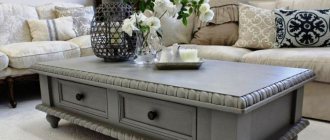

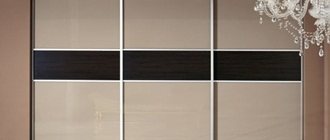
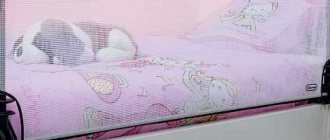

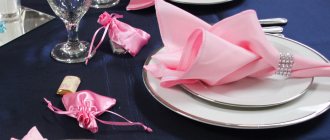
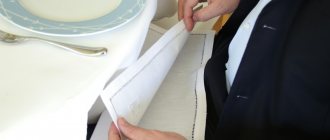
![How to beautifully fold napkins for a festive table: a variety of options [master classes]](https://ecokresla.ru/wp-content/uploads/kak-krasivo-slozhit-salfetki-dlya-prazdnichnogo-stola-raznoobrazie-variantov-master-330x140.jpg)
